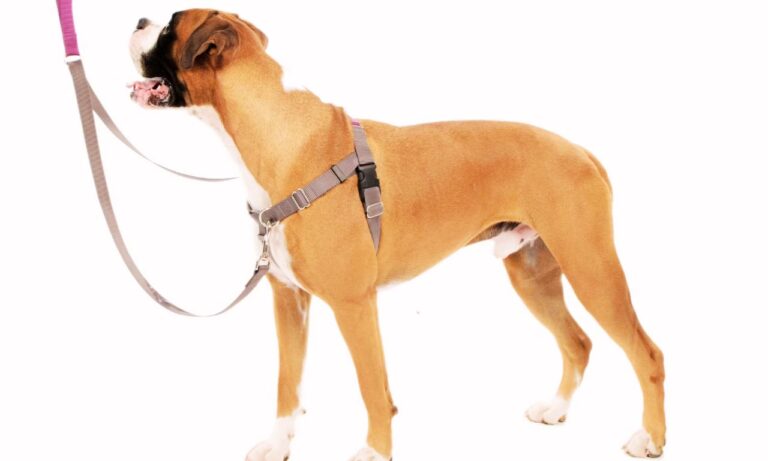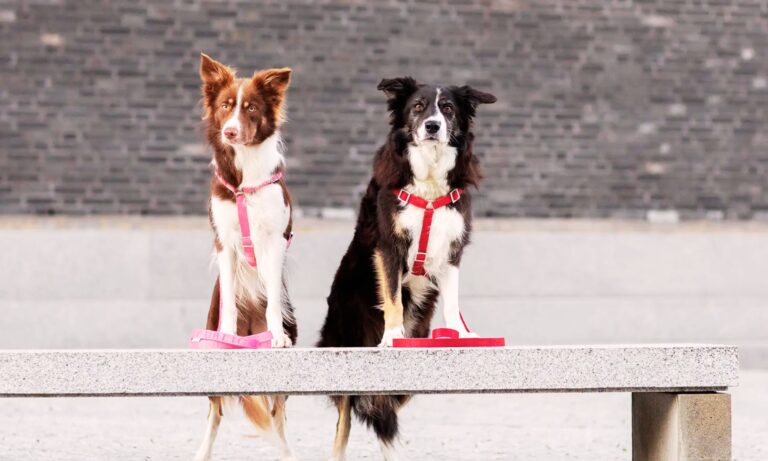If you’re raising a Labrador Retriever puppy, one of the biggest questions you’ll constantly wonder is: Is my Lab growing normally? Labs are one of the most beloved breeds in the world, known for their playful spirit, loyalty, and strong build. But they don’t stay tiny for long. That’s why having a Labrador weight calculator can be a total game-changer.
In this detailed guide, we’re going to explain how you can accurately predict and monitor your Labrador puppy’s weight from the wiggly newborn days all the way to that solid, athletic adult stage. We’ll break down real numbers, growth stages, and even common mistakes owners make when estimating weight. Let’s get started with everything you need to know.
Learn more about the unique double-layered coat of an Anatolian Shepherd and how to care for it effectively.
Blog Highlights
ToggleUnderstanding Labrador Puppy Growth
Before diving into calculators and formulas, it’s important to understand how Labrador puppies grow.
Labrador Retrievers are classified as a large breed. This means they grow slower than small breeds, reaching full adult size at around 12–18 months. However, the most dramatic growth happens during the first 6 months.

- Newborn Labs usually weigh about 0.5–0.75 pounds at birth.
- At 8 weeks (when most people bring their puppy home), a healthy Lab will often weigh between 10–15 pounds.
- By 6 months, you can expect your Labrador to weigh anywhere from 45–60 pounds depending on genetics, gender, and diet.
But even though we have general guidelines, every Lab is unique. That’s where weight calculators come in handy — they help you track your specific puppy’s progress rather than relying on averages alone.
For insights on whether Pomeranians should wear a collar, including considerations for safety and alternatives, check out this informative article.
Why Use a Labrador Weight Calculator?
You might be thinking, “Can’t I just weigh my puppy every few weeks?”
You absolutely can — and should! But a Labrador weight calculator gives you something extra: projections.

With just a few basic numbers (like your puppy’s current weight and age), these calculators estimate what your Labrador’s adult weight might be. They also help you spot if your pup’s growth curve is too fast (risking joint problems) or too slow (maybe due to nutritional issues).
Some real benefits of using a Labrador weight calculator include:
- Early detection of health issues (like stunted growth or obesity)
- Helping you plan food portions and adjust diets as needed
- Giving peace of mind that your puppy’s growth is on the right track
- Estimating future size to prepare for training and space needs
It’s a simple tool, but incredibly powerful when used correctly. Discover if the American Eskimo is a guard dog and learn about its suitability for protecting your home.
How Labrador Weight Calculators Work
Most Labrador puppy weight calculators work with a pretty simple method: they use your Lab’s current age and weight to predict the final adult size.

Here’s a basic idea of how it works:
- Find your Labrador’s weight at 14 weeks old.
- Double it.
- Add 50% of that number to estimate adult weight.
Example:
- A 14-week-old Lab weighing 22 pounds:
- 22 × 2 = 44
- 44 + 22 = 66 pounds estimated adult weight
This method is called the 14-week formula and works well for Labs and other large breed puppies.
However, some calculators are even more detailed and use growth charts, percentile curves, and specific breed data to give more refined results. Some advanced calculators also ask for your Labrador’s gender (since males are often larger), whether they are an English or American Lab, and even their parents’ sizes. Learn about the size collar for an American Eskimo to ensure a perfect fit and comfort for your dog.
Average Weight Estimates for Labrador Puppies (Real Numbers)
For quick reference, here’s a rough breakdown of typical Labrador puppy weight by age:
| Age | Average Weight (lbs) | Average Weight (kg) |
| 8 weeks | 10–15 lbs | 4.5–6.8 kg |
| 12 weeks | 20–25 lbs | 9–11.3 kg |
| 16 weeks | 30–40 lbs | 13.6–18.1 kg |
| 6 months | 45–60 lbs | 20.4–27.2 kg |
| 9 months | 55–70 lbs | 24.9–31.7 kg |
| 12 months | 60–80 lbs | 27.2–36.3 kg |
Remember:
Males usually end up at the higher end of the scale, around 70–80 pounds, while females often settle in the 60–70 pound range.

Also, an American-type Labrador (bred for fieldwork) tends to be leaner and taller, while an English-type Labrador (bred for conformation shows) is stockier and heavier.
Labrador Weight Calculator: Step-by-Step Example
Let’s walk through a real-life example to show how to use a Labrador weight calculator manually:
1. Weigh your Labrador puppy at 16 weeks old. Suppose your Lab weighs 32 pounds.
2. Apply the 14-week formula (adapted for 16 weeks): For 16 weeks, many calculators suggest multiplying by about 1.7 instead of 2.
- 32 × 1.7 = 54.4 pounds predicted.
3. Adjust based on breed line and gender: If it’s a male English Lab, add 10% (heavier frame).
- 54.4 + 5.44 = around 60 pounds as a likely adult weight.
4. Monitor monthly: Keep checking every 4 weeks to see if your puppy is following the predicted curve.
Discover why Afghan Hound collars are wide by exploring the unique characteristics of this breed and how wide collars enhance their comfort and style.
Factors That Can Affect Labrador Weight
Not every Labrador follows a “perfect chart.” Several factors can cause variations in growth:
- Genetics: The size of the parents is the biggest predictor of final weight.
- Nutrition: Overfeeding can cause unhealthy fast growth; underfeeding can cause stunted development.
- Activity Level: Super active Labs may stay leaner; lazier Labs may bulk up.
- Spaying/Neutering: Some Labs gain weight easier after surgery.
- Health Issues: Worms, digestive issues, or metabolic diseases can slow growth.
That’s why calculators are guides — not absolute rules. You always need to observe your pup personally.

Common Mistakes When Using a Labrador Weight Calculator
While Labrador weight calculators are helpful, many owners make a few mistakes when using them. Here’s what to avoid:
1. Expecting perfect accuracy:
These calculators predict estimates — not guarantees. Individual growth rates vary.
2. Using poor-quality scales:
Bathroom scales can be inaccurate. Always use a pet-specific or baby scale.
3. Ignoring sudden weight jumps:
If your Lab suddenly gains too much weight, it’s not just “growth” — it might be overfeeding.
4. Not considering body condition:
A 60-pound chunky Lab is very different from a 60-pound athletic Lab. Look at body shape, not just numbers.
5. Comparing to other breeds:
A Labrador’s growth pattern is very different from that of a German Shepherd or Golden Retriever. Stick to breed-specific expectations.
Labrador Puppy Growth Timeline (In More Detail)
Here’s what to expect from your Labrador’s weight milestones month-by-month:
- 0–2 Months: Tiny and fragile, gaining about 2–3 pounds per week.
- 2–4 Months: Rapid growth. Puppies triple their 8-week weight.
- 4–6 Months: Slight slowing but still rapid; limbs start to look long and gangly.
- 6–9 Months: Growth in height mostly done; weight starts to “fill out.”
- 9–12 Months: Muscles develop; the chest broadens.
- 12–18 Months: Full adult body, but mental maturity takes longer.
At 6 months, your Lab puppy might already be 70% of their adult weight — but still acting like a total goofball.
How to Weigh Your Labrador at Home
If you don’t have easy access to a vet or professional dog scale, you can weigh your Labrador at home in two easy ways:
1. Using a Bathroom Scale (Small Puppies):
- Step on the scale alone and note your weight.
- Step on the scale holding your puppy and note the combined weight.
- Subtract your weight from the combined weight.
2. Using a Pet Scale (Best for Medium Puppies):
- You can buy a pet-specific scale online for about $40–$60.
- Place the puppy gently on the scale, reward with a treat, and read the number.
For adult Labradors, it gets trickier unless you have a large platform scale.
When to Worry About Your Labrador’s Weight
If your Labrador puppy falls 20% above or below the average expected weight for their age, it’s a good idea to check in with your vet.
Signs your Labrador may be overweight:
- No visible waist when viewed from above
- Difficulty feeling the ribs with light pressure
- Lethargy or reduced willingness to exercise
Signs your Labrador may be underweight:
- Visible ribs, spine, and hips
- Lack of muscle mass
- Fatigue or poor coat quality
A healthy Lab should have a slight waist tuck when viewed from the side and you should be able to feel the ribs without pushing too hard.
Final Thoughts: Grow With Confidence
A Labrador weight calculator isn’t just a fun tool — it’s a smart way to understand your puppy’s health journey.
By learning how to track growth and weight properly, you’ll be able to catch problems early, avoid common mistakes, and raise a fit, happy, playful Lab who lives a long, energetic life.
Remember, every Labrador grows at their own pace. Use calculators, charts, and projections as helpful guides — but always trust your eyes, your hands, and your vet’s advice when it comes to your unique dog.
With a little knowledge, a good scale, and lots of love, you’ll enjoy every crazy, cuddly, tail-wagging moment as your Lab puppy grows into your best friend for life. Find out what style dog collar is best for hounds to ensure comfort and safety for your furry friend.





